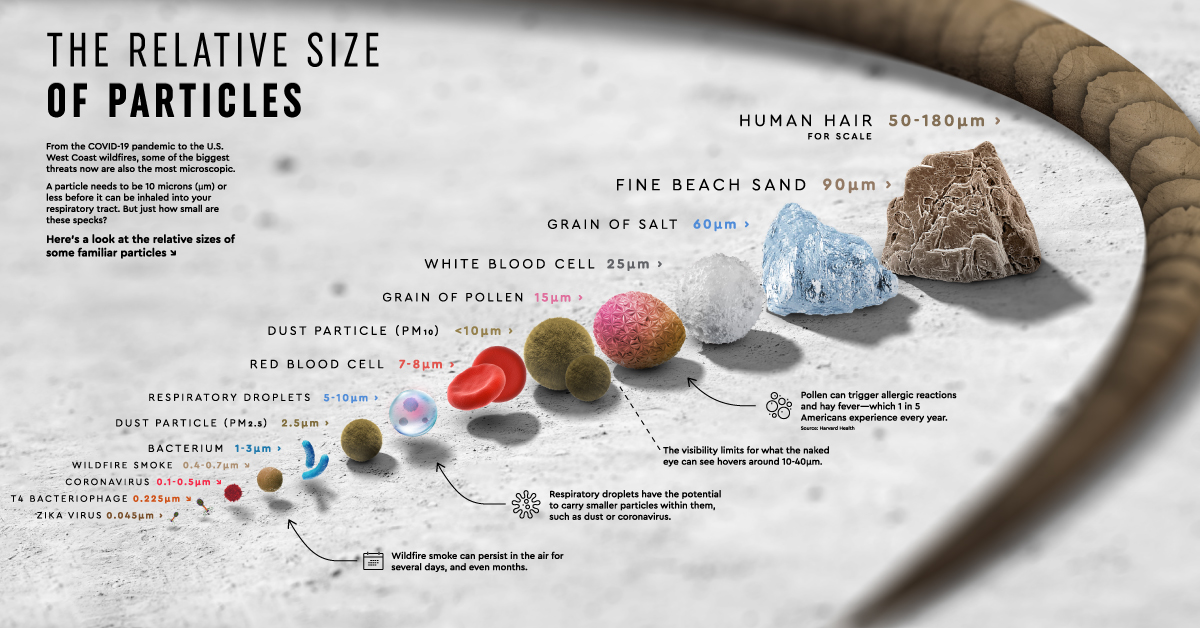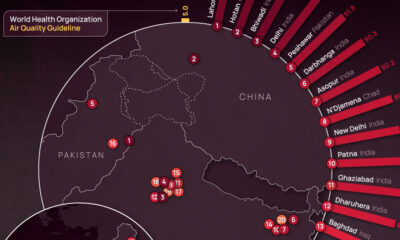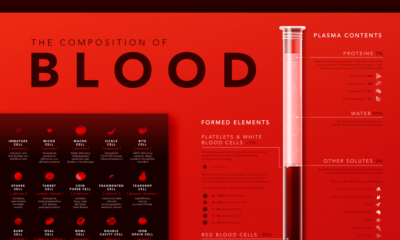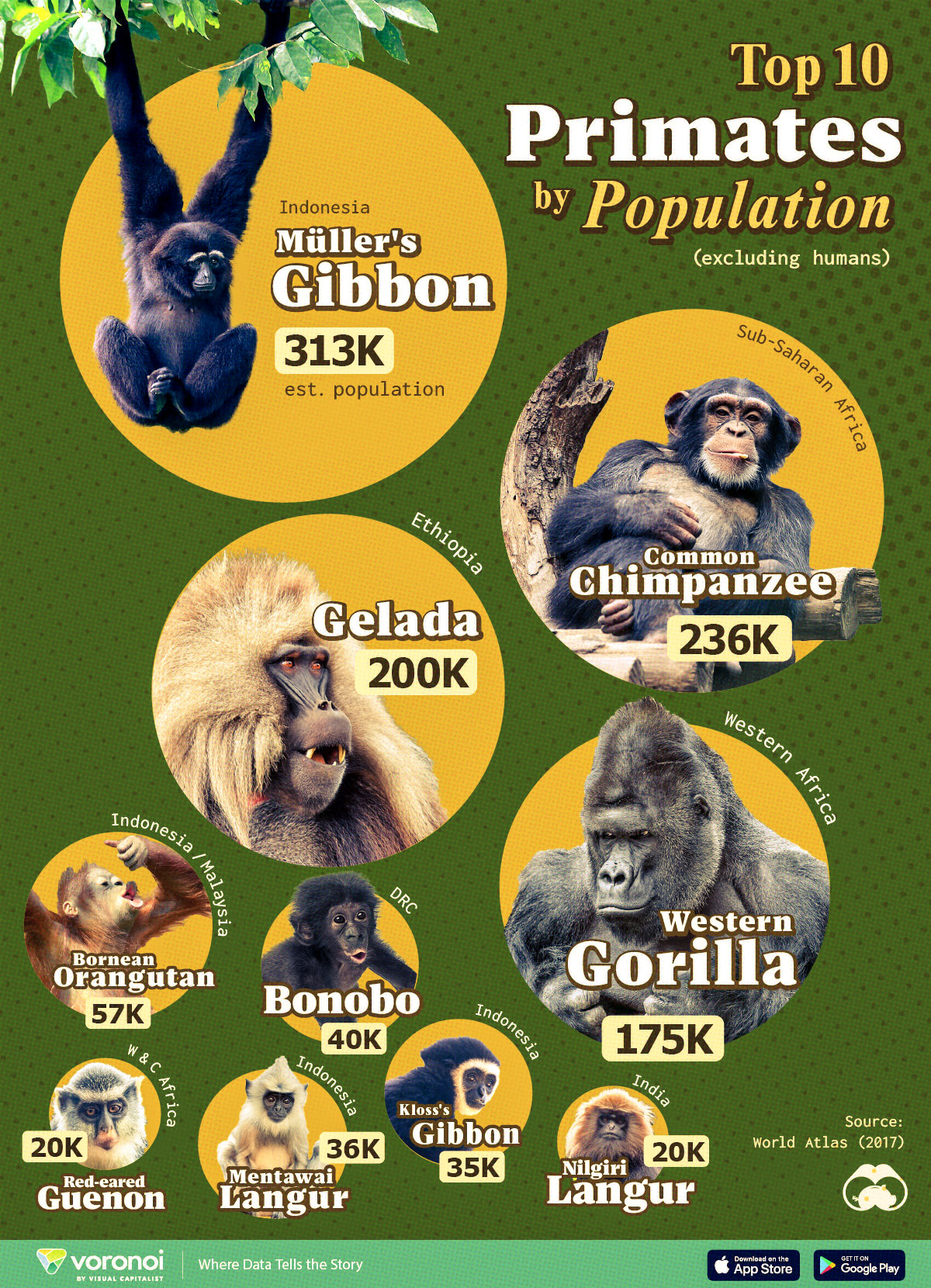Science
Zooming In: Visualizing the Relative Size of Particles
View the full-size version of this infographic.
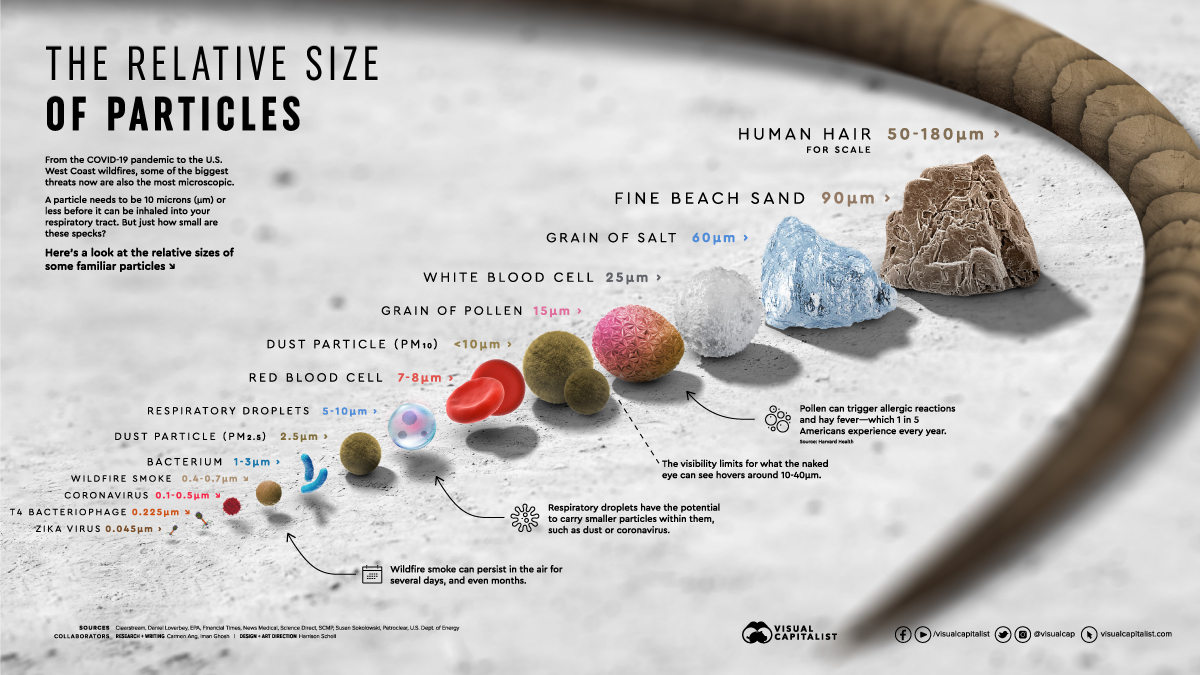
Zooming In: Visualizing the Relative Size of Particles
View the full-size version of this infographic.
Lately, the world’s biggest threats have been microscopic in size.
From the global COVID-19 pandemic to wildfires ripping through the U.S. West Coast, it seems as though our lungs can’t catch a break, or more aptly, a breath.
But just how small are the particles we’re currently battling? And how does their size compare to other tiny molecules?
Specks Too Small to See
While the coronavirus that causes COVID-19 is relatively small in size, it isn’t the smallest virus particle out there.
Both the Zika virus and the T4 Bacteriophage—responsible for E. coli—are just a fraction of the size, although they have not nearly claimed as many lives as COVID-19 to date.
Coronavirus particles are smaller than both red or white blood cells, however, a single blood cell is still virtually invisible to the naked eye. For scale, we’ve also added in a single human hair as a benchmark on the upper end of the size range.
| Particles | Average Size (microns, μm) |
|---|---|
| Zika virus | 45nm |
| T4 Bacteriophage | 225nm |
| Coronavirus COVID-19 (SARS-CoV-2) | 0.1-0.5μm |
| Bacterium | 1-3μm |
| Light dust particle | 1μm |
| Dust particle: PM2.5 | ≤2.5μm |
| Respiratory droplets containing COVID-19 | 5-10μm |
| Red blood cell | 7-8μm |
| Dust particle: PM10 | ≤10μm |
| Pollen grain | 15μm |
| White blood cell | 25μm |
| Visibility threshold (Limit of what the naked eye can see) | 10-40μm |
| Grain of salt | 60μm |
| Fine beach sand | 90μm |
| Human hair | 50-180μm |
On the other end of the spectrum, pollen, salt, and sand are significantly larger than viruses or bacteria. Because of their higher relative sizes, our body is usually able to block them out—a particle needs to be smaller than 10 microns before it can be inhaled into your respiratory tract.
Because of this, pollen or sand typically get trapped in the nose and throat before they enter our lungs. The smaller particles particles, however, are able to slip through more easily.
Smoky Skies: Air Pollution and Wildfires
While the virus causing COVID-19 is certainly the most topical particle right now, it’s not the only speck that poses a health risk. Air pollution is one of the leading causes of death worldwide—it’s actually deadlier than smoking, malaria, or AIDS.
One major source of air pollution is particulate matter, which can contain dust, dirt, soot, and smoke particles. Averaging around 2.5 microns, these particles can often enter human lungs.
At just a fraction of the size between 0.4-0.7 microns, wildfire smoke poses even more of a health hazard. Research has also linked wildfire exposures to not just respiratory issues, but also cardiovascular and neurological issues.
Here’s an animated map by Flowing Data, showing how things heated up in peak wildfire season between August-September 2020:
What’s the main takeaway from all this?
There are many different kinds of specks that are smaller than the eye can see, and it’s worth knowing how they can impact human health.
Science
What Are the 10 Most Common Primates in the World?
This list excludes humans, who would otherwise lead the ranks of most common primates by a significant margin.
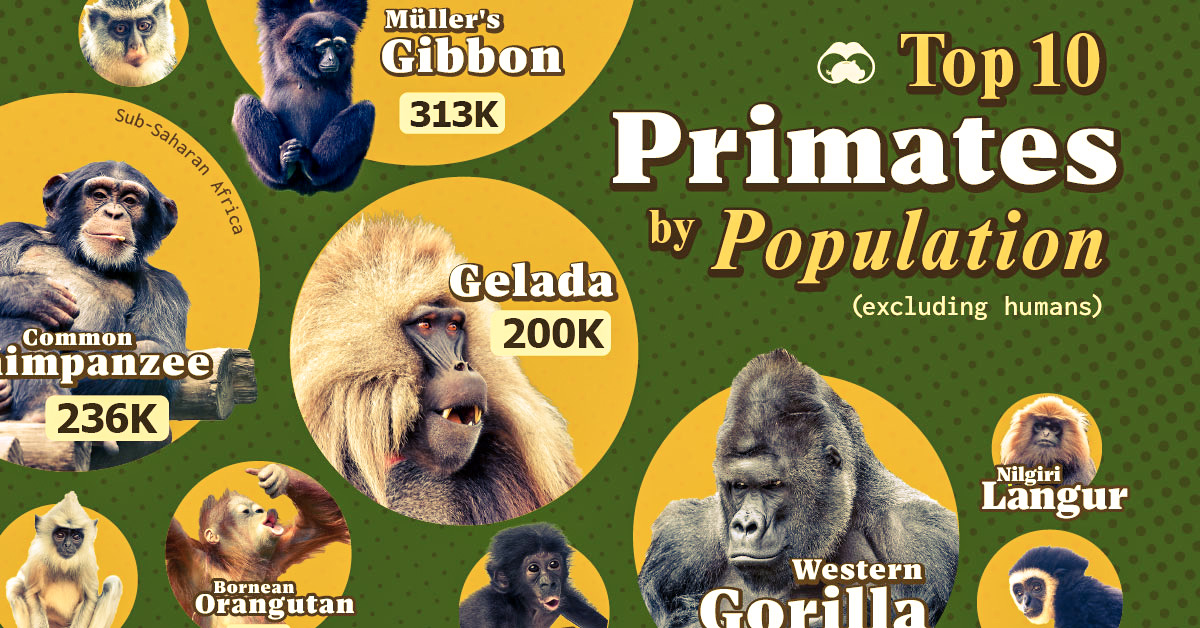
What Are the 10 Most Common Primates in the World?
This was originally posted on our Voronoi app. Download the app for free on Apple or Android and discover incredible data-driven charts from a variety of trusted sources.
The word ‘primate’ traces its roots back to the Latin word ‘primas,’ meaning ‘of first rank’ or the highest order in the animal kingdom. This classification intuitively reflects humans’ fascination with the many species who are our closest cousins.
In this graphic, we visualize the top 10 species of primates, ranked by their estimated global population. This data comes from WorldAtlas, and was last updated in 2017.
Given the difficult nature of tracking wild animals, these numbers should be treated as approximations rather than exact figures.
Ranked: Top 10 Primates, by Population
At the top of the list, there are more than 300,000 Müller’s Bornean Gibbons in the world, found on the island of Borneo in Indonesia and Malaysia.
The larger gibbon family consists of around 20 species of small apes found swinging through Southeast Asian rainforests. These acrobatic primates are known for their loud calls, impressive agility, and monogamous family structures.
Despite their ape status, they differ from great apes by being smaller and lacking nests.
| Rank | Monkey | Region of Origin | Estimated Population (as of 2017) |
|---|---|---|---|
| 1 | Muller's Bornean Gibbon | 🇮🇩 Indonesia | 312,500 |
| 2 | Common Chimpanzee | 🌍 Sub-Saharan Africa | 236,200 |
| 3 | Gelada | 🇪🇹 Ethiopia | 200,000 |
| 4 | Western Gorilla | 🌍 Western Africa | 175,000 |
| 5 | Bornean Orangutan | 🇮🇩 Indonesia / 🇲🇾 Malaysia | 57,000 |
| 6 | Mentawai Langur | 🇮🇩 Indonesia | 36,000 |
| 7 | Bonobo | 🇨🇩 DRC | 39,750 |
| 8 | Kloss's Gibbon | 🇮🇩 Indonesia | 35,000 |
| 9 | Red-eared Guenon | 🌍 West & Central Africa | 20,000 |
| 10 | Nilgiri Langur | 🇮🇳 India | 20,000 |
Ranked second, the Common Chimpanzee can be found in the savannas and forests of sub-Saharan Africa. A subspecies—the Eastern Chimpanzees in Tanzania’s Gombe National Park—were the primary focus of noted biologist Jane Goodall’s pioneering research in the 1960s.
Despite their apparent numbers, chimpanzees are now classified as an endangered species by the UN, their survival threatened by habitat loss, poaching, and disease.
All the way across, in Ethiopia, the Gelada species is the third most populous primate on the planet. Their short, stump fingers make them adept rock climbers—useful for navigating the Semien mountains they call home.
At fourth place, the Western Gorilla, also found in Africa, is the last primate species with a population above 100,000. The Western Gorillas are a little smaller than their Eastern counterparts, who are the largest living primates.
See More Animal Graphics From Visual Capitalist
If you’re curious to learn more about animals, check out this graphic that ranks the top speeds of the world’s fastest animals.
-

 Real Estate2 weeks ago
Real Estate2 weeks agoVisualizing America’s Shortage of Affordable Homes
-

 Technology1 week ago
Technology1 week agoRanked: Semiconductor Companies by Industry Revenue Share
-

 Money1 week ago
Money1 week agoWhich States Have the Highest Minimum Wage in America?
-

 Real Estate1 week ago
Real Estate1 week agoRanked: The Most Valuable Housing Markets in America
-

 Business2 weeks ago
Business2 weeks agoCharted: Big Four Market Share by S&P 500 Audits
-

 AI2 weeks ago
AI2 weeks agoThe Stock Performance of U.S. Chipmakers So Far in 2024
-

 Misc2 weeks ago
Misc2 weeks agoAlmost Every EV Stock is Down After Q1 2024
-

 Money2 weeks ago
Money2 weeks agoWhere Does One U.S. Tax Dollar Go?




